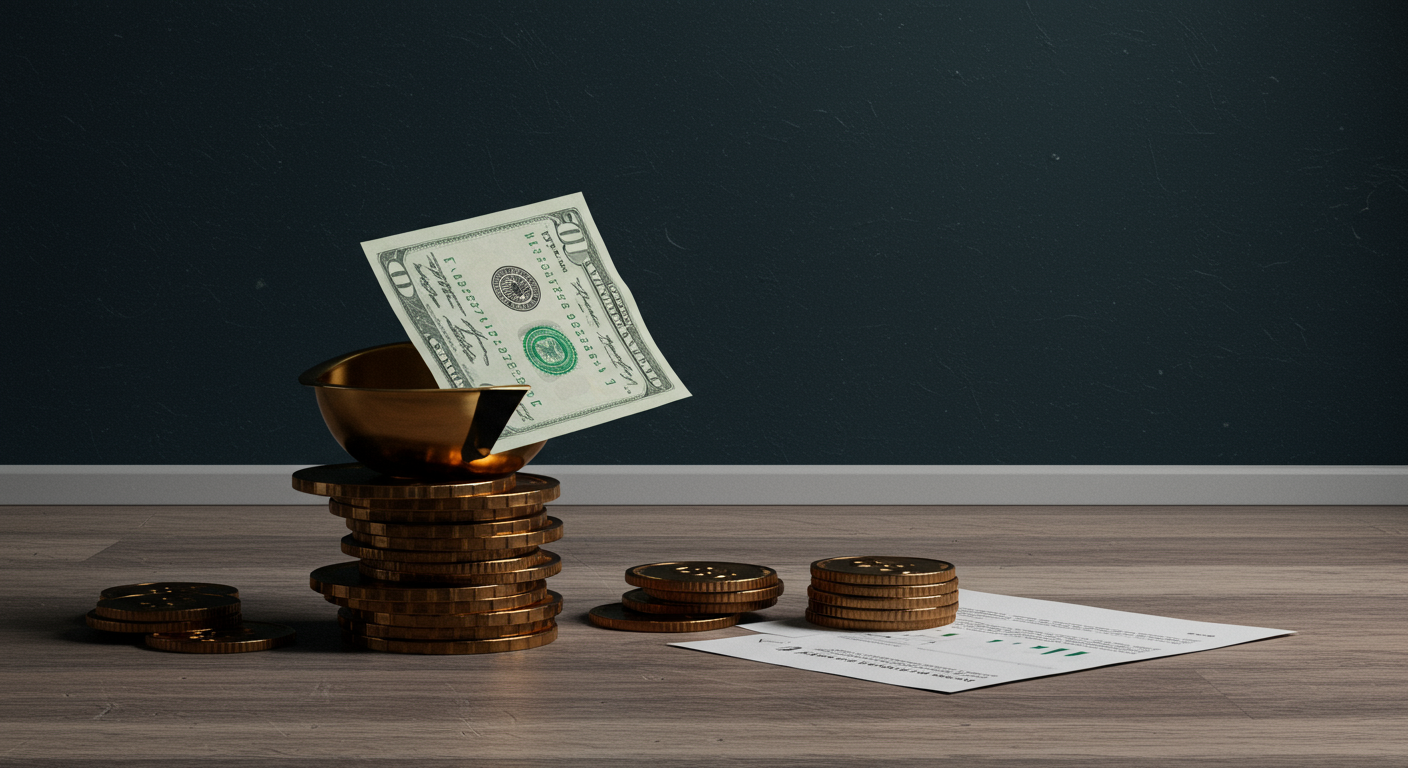The conversation around Federal Reserve interest rates just took an unexpected turn. For months, the dominant question in financial circles and among everyday consumers has been, when will the Fed start cutting rates? But recent insights directly from the central bank suggest we might be asking the wrong question. The Federal Reserve has thrown a curveball, and understanding it is crucial for your financial well-being. This article will break down the latest news, decode what it means, and explain the direct impact on your wallet, from your savings account to your mortgage.
The latest detailed notes, or minutes, from the Federal Open Market Committee (FOMC) meeting have been released, and they paint a picture of a central bank that is far from declaring victory over inflation. While the Fed officially held its benchmark interest rate steady at its last meeting—a move that was widely expected—the discussion behind closed doors was much more revealing. The minutes showed that many Fed officials are concerned about the lack of progress in bringing inflation back down to their 2% target. The real surprise, however, was the revelation that some participants are even willing to consider raising interest rates again if inflation proves more stubborn than anticipated. This is a significant pivot from the previous market consensus that the next move would undoubtedly be a rate cut.
Decoding the Fed’s Language: What Does ‘Hawkish’ Mean?
When discussing central bank policy, you’ll often hear the terms hawkish and dovish. These are essential concepts for understanding the Federal Reserve’s mindset. Think of it this way:
- A hawkish stance favors higher interest rates to fight inflation. Like a hawk, it’s aggressive and focused on its target—in this case, price stability. A hawkish Fed is willing to slow down the economy to ensure prices don’t spiral out of control.
- A dovish stance favors lower interest rates to encourage borrowing and stimulate economic growth. Like a dove, it’s a more gentle approach, prioritizing job growth even at the risk of slightly higher inflation.
The latest meeting minutes reveal a distinctly more hawkish tone than investors and economists had been anticipating. The message is clear: the Federal Reserve’s primary concern remains inflation, and they are prepared to keep monetary policy tight—or even tighten it further—to win that battle. This shift indicates that the era of high interest rates may persist for longer than many had hoped.

The Root of the Problem: Stubbornly High Inflation
So, why this sudden change in tone? The answer lies in one word: inflation. Inflation is simply the rate at which the overall prices for goods and services increase, which erodes the purchasing power of your money. In other words, your dollar buys less today than it did yesterday. After a promising period where inflation was steadily declining, recent data has been disappointing. Key metrics like the Consumer Price Index (CPI) have shown that price pressures in certain sectors of the economy are “sticky” and not cooling as quickly as needed.
The Federal Reserve has a dual mandate: to promote maximum employment and to maintain stable prices. When inflation remains well above their 2% target, they must act. Keeping interest rates high is their primary tool. By making it more expensive to borrow money, the Fed slows down spending and investment, which in turn cools down demand and helps to bring prices under control. The recent minutes show that officials are looking for more than just a month or two of good data; they need sustained confidence that inflation is on a firm path downward before they will even consider rate cuts. Understanding the broader economy and the forces driving inflation is crucial for every consumer and investor trying to navigate this environment.
How High Federal Reserve Interest Rates Directly Impact You
This isn’t just abstract economic theory; the Fed’s decisions have real-world consequences for your personal finances. A “higher-for-longer” interest rate environment affects everyone in several key ways:
- The Cost of Borrowing: This is the most direct impact. The Fed’s benchmark rate influences almost all other interest rates. This means that loans for cars, new homes (mortgages), and even your credit card’s Annual Percentage Rate (APR) will remain high. If you were planning a major purchase that requires financing, the cost of that loan will be significantly higher than it was a few years ago.
- The Reward for Saving: There is a silver lining. High interest rates are great news for savers. Financial institutions must offer more competitive rates to attract deposits. This means that High-Yield Savings Accounts (HYSAs) and Certificates of Deposit (CDs) are currently offering some of the best returns seen in over a decade. This is a key consideration for anyone building an effective savings strategy or an emergency fund.
- The Stock Market: The stock market tends to get nervous when the prospect of rate cuts fades. Higher interest rates can make it more expensive for companies to borrow money for expansion, which can slow down earnings growth. Furthermore, with “safe” options like HYSAs offering attractive returns, some investors may choose to move money out of the riskier stock market. This can lead to increased market volatility.
- The Housing Market: Mortgage rates are closely tied to the economic outlook and the Fed’s policy. The signal that rates will stay high means that mortgage rates are unlikely to see a significant drop anytime soon, keeping housing affordability a major challenge for many potential buyers.
Navigating the Path Forward
The Fed’s latest communication serves as a powerful reminder that the economic path is not a straight line. The prospect of an interest rate hike is still considered a low probability, but the fact that it is even part of the discussion has reset market expectations. The new mantra is no longer “when will they cut?” but rather “how long will rates stay this high?”
For the average person, the best course of action is to focus on what you can control. This is an excellent time to aggressively pay down high-interest debt, particularly credit card balances, as their variable rates will continue to be costly. Simultaneously, take advantage of the high-rate environment by bolstering your emergency fund in a high-yield savings account where it can earn meaningful interest. For long-term goals, it’s essential to stick to your investment plan and avoid making rash decisions based on short-term market noise. The Fed’s cautious stance emphasizes the importance of financial discipline and preparedness.
Frequently Asked Questions (FAQ)
Q: Does this mean the Fed is definitely going to raise interest rates again?
A: Not necessarily. It is more of a signal that officials are keeping all options on the table. The minutes show that some members are willing to consider a hike if inflation data gets worse, but this is not the baseline forecast. The most probable scenario is still that the Federal Reserve will hold rates at their current level for an extended period to ensure inflation is fully under control before making any changes.
Q: I was waiting for mortgage rates to fall before buying a house. What should I do now?
A: This news suggests that significant relief on mortgage rates may be further away than many had hoped. While it’s impossible to predict the future, it’s wise to prepare for the possibility that current rate levels could persist for many more months. This doesn’t mean you can’t buy a home, but it reinforces the need to budget carefully for higher monthly payments. Focus on strengthening your financial position by improving your credit score, reducing other debts, and saving for a larger down payment, all of which can help you secure the best possible rate when you are ready to buy.



